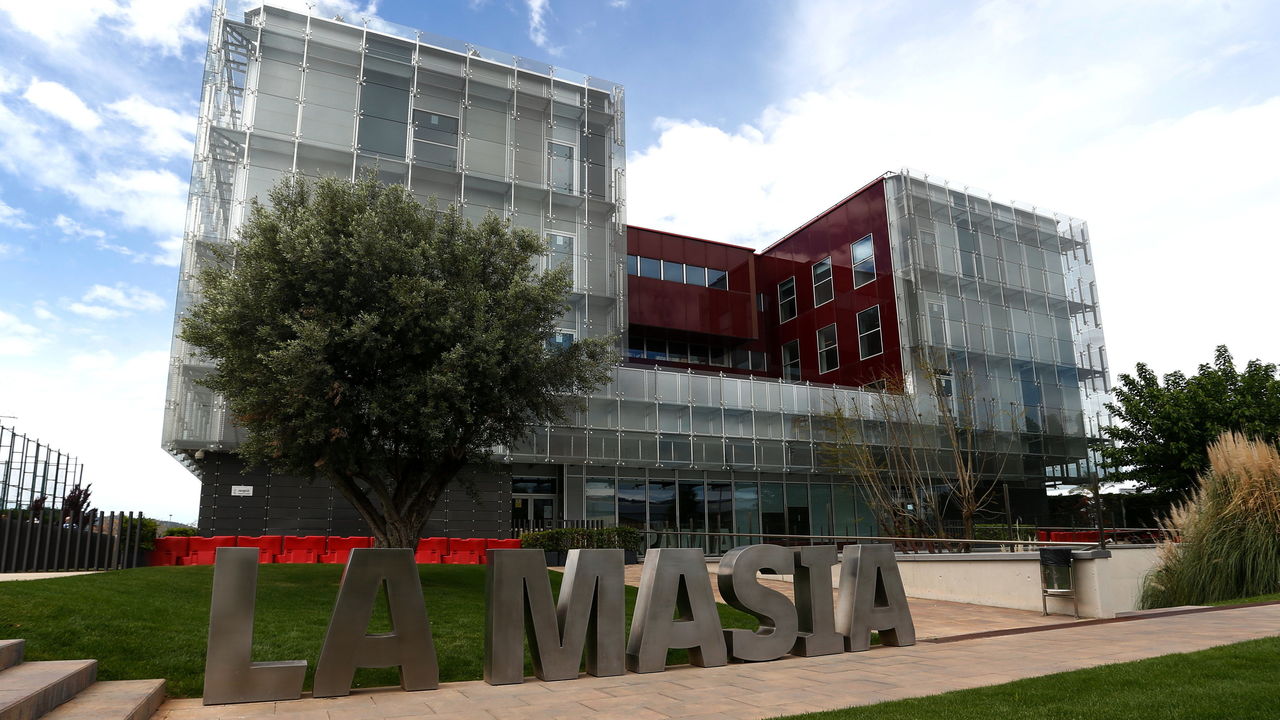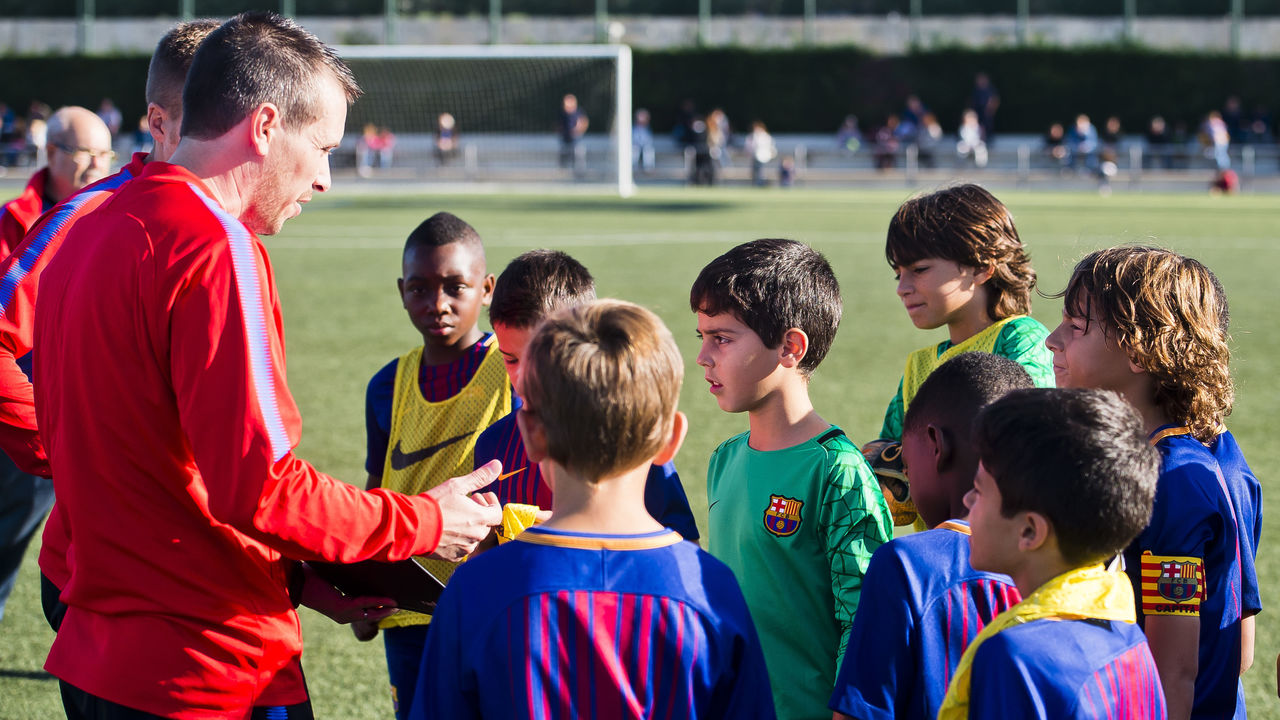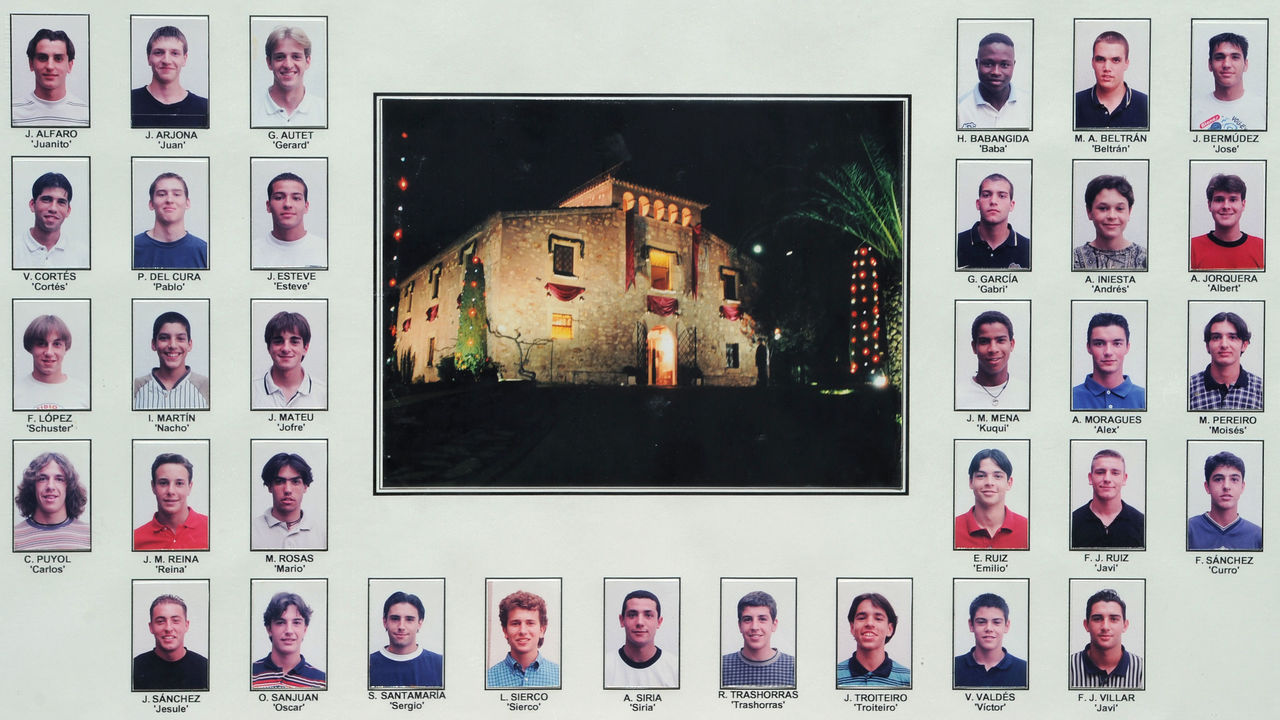Inside La Masia: Learning the 'three Ps' at Barcelona's famed academy
theScore's Gianluca Nesci spent five days in Catalonia leading up to Sunday's El Clasico between Barcelona and Real Madrid. You can find the complete collection of stories from the trip here.
BARCELONA - Possession. Position. Pressing.
The three Ps - the bedrock of Barcelona's footballing philosophy - can be seen everywhere you turn at the club's famed academy, La Masia.
"It's our DNA," Sergio Vallecillo, La Masia's head of methodology, said. "We believe the ball should belong to us all the time. And when we lose it, we try to recover it as soon as possible."
The original farmhouse may be gone, replaced in 2011 by a glistening building that is the epicenter of the club's Joan Gamper training complex, but the tenet remains.
Always, always, always cherish the ball.

According to Mario Ruiz, the academy's communications director, that's the message delivered to over 300 young footballers, male and female, who comprise the bulk of the La Masia umbrella. Overall, Barca's academy trains some 700 boys and girls - 79 of which live within the campus full-time - across five different sports.
The emphasis on operating the "Barcelona way" persists, even if, at the very top of the Blaugrana pyramid, things sometimes stray a little off course. Ernesto Valverde has chopped and changed his tactics aplenty since taking over at the Camp Nou, a point of contention among supporters steadfast in their belief that the club's traditional 4-3-3 system is always the best option.
The 54-year-old, who spent two seasons with Barca during his playing days, has even opted for a 4-4-2 formation at times during his tenure. Although this may be sacrilege for tiki-taka purists, things have worked out just fine: the Catalan side captured a domestic double in Valverde's first season in charge last year, and sit atop the La Liga table this season.
As evidenced by the methodical 30-pass sequence that lulled Real Madrid to sleep - and then tore them open - for Philippe Coutinho's opening goal in Sunday's El Clasico, Valverde isn't tearing up the script and rewriting it.
The club's identity is intact.
"Everything" revolves around the ball, Ruiz explained on a sunny morning at the training compound.
The proof is right behind him. Just over Ruiz's shoulder, on one of the many pristine pitches inside the complex, the Under-17 side kicks off a training session with the quintessential Barca exercise: rondos.
🌪 Have you seen the Barça flying rondos? 😵 pic.twitter.com/weaMVsifWS
— FC Barcelona (@FCBarcelona) March 27, 2018
From the moment a promising talent arrives at La Masia - the youngest players in the club's system are 7 years old - through their progression to, ideally, the first team, rondos are a staple of their everyday lives.
Every training session begins the same way: form a circle, stick a couple of players inside it, and move the ball around them - often with only one touch allowed.
"The rondos are very important. We have to start working from a young age on the position of the body and the circulation of the ball, and as they get older, the exercise gets bigger to work on positioning and their understanding of space," Alberto Encinas, the methodology coach for the Under-19 'A' team, told theScore.
It's all about developing the "possession game," he added.
Making the 7-year-olds play small-sided games against bigger, stronger 9-year-olds only serves to emphasize that point: when overmatched physically, you need to know how to manage the ball.
Think Andres Iniesta, who mastered the sport despite having no discernible physical skills. Quickness with your feet is good, quickness with your eyes and mind, Ruiz says, is better.
Master this in tight spaces - the exercise gets larger as the players get older - and you excel in large spaces. Like, say, at the Camp Nou, where every footballer at La Masia aspires to be.

Particularly those with Barcelona's B team. Largely comprised of teenagers, the squad, which competes in the third tier of Spanish football, is the final hurdle before, hopefully, rubbing shoulders with Lionel Messi and Co.
Ruiz allowed for a brief glimpse into one of their training sessions, where Riqui Puig, an electrifying 5-foot-5 central midfielder, embarked on a mazy run through a collection of defenders. A stumble at the vital moment allowed the 'keeper to rush out and collect the ball off his toe.
The Puig hype train is moving at warp speed in Catalonia, and for multiple reasons.
The 19-year-old is, without a doubt, supremely talented. But perhaps more importantly, he represents the next great hope at a time when La Masia's waning influence on the first team has been a hot-button issue amongst fans.
Many expect him to reinvigorate an assembly line that has slowed dramatically in recent years, which, in part, is simply due to unrealistic expectations. This is an academy, remember, that produced one of the greatest generations of talent in football history; Gerard Pique, Cesc Fabregas, Andres Iniesta, Xavi, Carles Puyol, and Sergio Busquets were all crucial members of the dominant Spanish national team that won three consecutive major tournaments from 2008-12.
And of course, it helped nurture Messi, too.
That was the golden generation of La Masia, culminating on Nov. 25, 2012, when the late Tito Vilanova rolled out a starting lineup comprised entirely of academy graduates. They cruised to a 4-0 win over Levante.
But that crop was an exception, not the rule.
The road from the farmhouse to the first team looks more difficult to navigate than ever before; in April of this year, Valverde used a lineup that didn't feature a single La Masia product, nor did it include a Catalan player. It was the first time in 16 years Blaugrana supporters had witnessed this.
They may have to get used to it.

Messi, Pique, and Busquets - the three remaining La Masia pillars in the wake of Iniesta's departure for Japan - are all over 30 years old, and the club has adopted an opulent transfer policy of late.
Ousmane Dembele cost over €100 million; Malcom, whose signing looks more and more curious by the day, arrived for an initial €41 million.
"They don't take it well," Vallecillo admitted when asked about academy players reacting to such deals. "It happens here. It happens at other clubs around the world. When they get to the level of professional football, they need to cope with those cases. What we try to do here is to ensure that they have the chance of getting to the first team.
"It can motivate them," Vallecillo added, "in the same way other people outside in the labor market can be motivated by a new recruit."
Ruiz jumped in, quick to bring up the example of Sergi Roberto.
Having made his Barcelona debut in 2010 as an 18-year-old, the club's resident Swiss Army knife had to wait another five years before he established himself as a consistent contributor. He's now made at least 21 appearances in each of the last three La Liga seasons.
The message is obvious. Patience is vital.
Perhaps it's time to introduce a fourth 'P' into the equation.
HEADLINES
- Stolarz helps Leafs beat Kraken in return to lineup
- Edwards rips Rockets' Brooks after tussle: 'He plays dirty'
- MacKinnon retakes NHL scoring lead with 3 points in win over Flames
- Jokic records 24th triple-double of the season as Nuggets rout Magic
- NFL Honors: All major award winners from Thursday's event